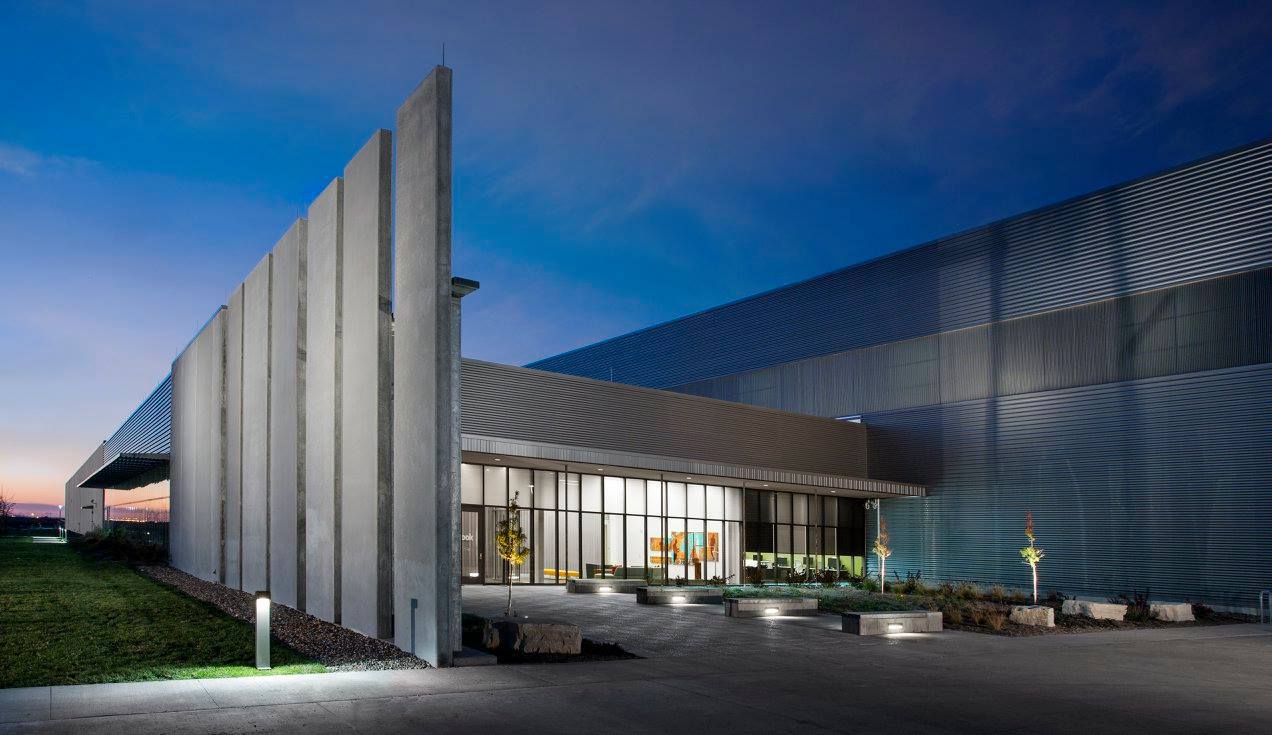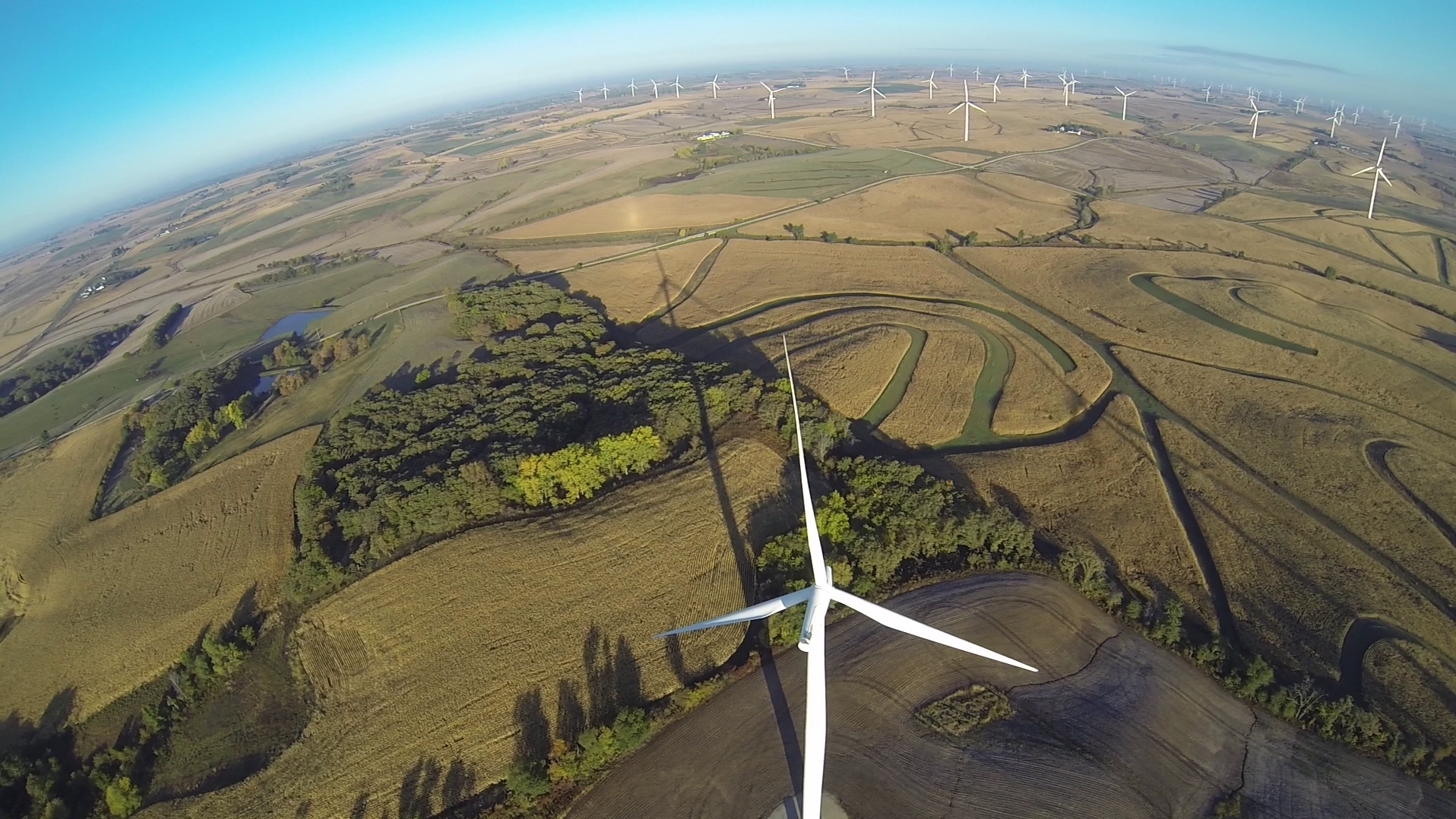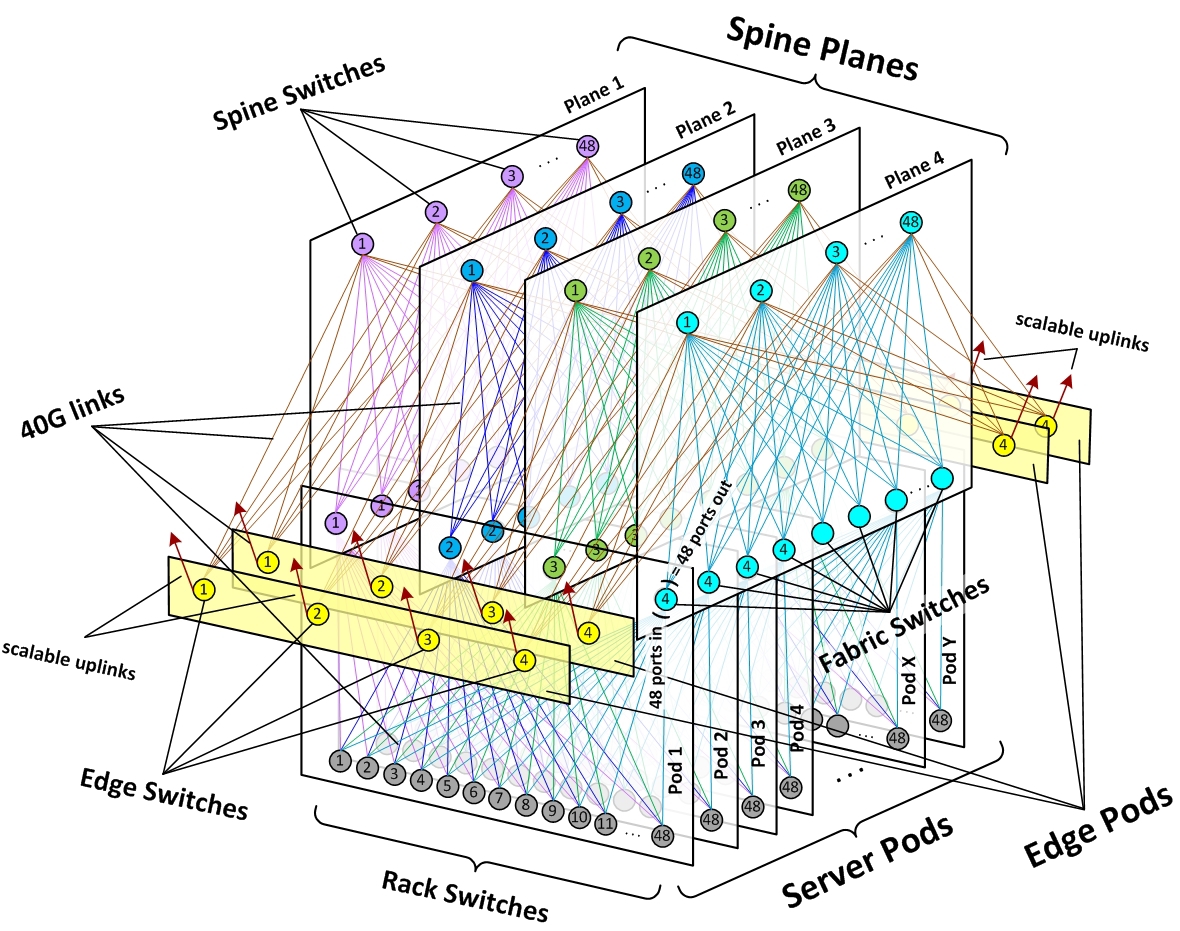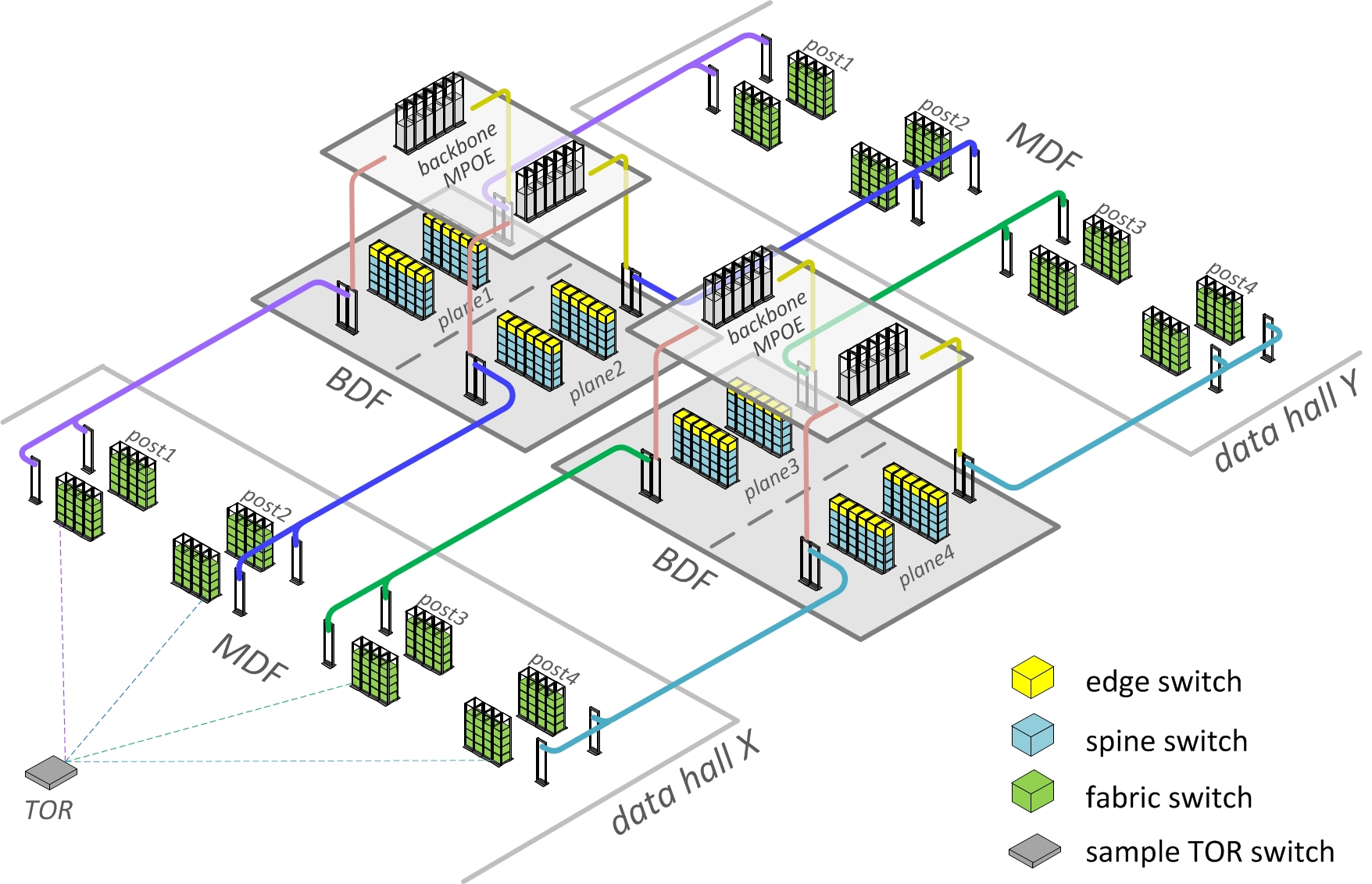Facebook launches data center with new network architecture
Recently, the state of Iowa has become a very popular place among data center operators. Facebook has officially announced the opening of the first building of its newest modular air-cooled data center in the city of Altoona. Representatives of the social network also reported that this data center will be the longest in the world.

This is the first Facebook data center, which will be 100% powered by electricity generated at a wind power plant (WPP). During the construction of the data center was used what Facebook calls the "data center fabric" - the design of the third generation based on a single high-performance network that will replace traditional clusters.
')
“This is one of the fastest construction processes among all our facilities, and with this we must first of all be grateful to the local people of Iowa,” said Bryce Townes, construction manager in Altoona. Facebook has already begun construction of a second building for the data center, the estimated date of completion and commissioning is the end of 2015.

Back in April 2013, the company planned to invest about $ 300 million in the construction of the first phase. It includes a data center area of 44.2 thousand square meters. m., which consists of 4 buildings of data storage. Power will come from wind farms near the town of Wellsberg. This wind farm is planning to generate about 140 MW of energy, which is more than enough to cover the possible growth in the future.
In order to attract Facebook, the city of Altoona authorities exempted it from all property taxes for a period of 20 years. This data center will be the first to introduce a new network architecture. Facebook networks were previously built using clusters, but the company said that this method is not suitable for good performance of the mega data center.

Network engineer Alexey Andreev explains that the cluster size is limited by the density of the switch port. “They have their own internal architectures that require more extensive knowledge of software and hardware. Given the large area of the data center, the impact of hardware and software failures can be quite significant, ”said Andreev.
Deploying small clusters of “pods,” as Facebook called them, and using the decentralized (peer-to-peer) network architecture, where each pod cluster can “talk” to another pod cluster, eliminates the need for high-density switches.

The pod cluster consists of 4 devices - “fabric switches” and 48 conventional switches, each of which is connected to “fabric switches” via a 40 Gbps channel. The servers in the rack are connected to the TOR switch using a 10 Gbps channel, the total throughput of each rack is 160 Gbps.

The system is fully automated, and engineers will never have to manually set up a separate device. If a device fails, it is replaced and automatically configured using software.
From now on, all its data centers Facebook is going to build using the new network architecture, and existing objects will move to it gradually.

This is the first Facebook data center, which will be 100% powered by electricity generated at a wind power plant (WPP). During the construction of the data center was used what Facebook calls the "data center fabric" - the design of the third generation based on a single high-performance network that will replace traditional clusters.
')
“This is one of the fastest construction processes among all our facilities, and with this we must first of all be grateful to the local people of Iowa,” said Bryce Townes, construction manager in Altoona. Facebook has already begun construction of a second building for the data center, the estimated date of completion and commissioning is the end of 2015.

Back in April 2013, the company planned to invest about $ 300 million in the construction of the first phase. It includes a data center area of 44.2 thousand square meters. m., which consists of 4 buildings of data storage. Power will come from wind farms near the town of Wellsberg. This wind farm is planning to generate about 140 MW of energy, which is more than enough to cover the possible growth in the future.
New kind of network architecture
In order to attract Facebook, the city of Altoona authorities exempted it from all property taxes for a period of 20 years. This data center will be the first to introduce a new network architecture. Facebook networks were previously built using clusters, but the company said that this method is not suitable for good performance of the mega data center.

Network engineer Alexey Andreev explains that the cluster size is limited by the density of the switch port. “They have their own internal architectures that require more extensive knowledge of software and hardware. Given the large area of the data center, the impact of hardware and software failures can be quite significant, ”said Andreev.
Deploying small clusters of “pods,” as Facebook called them, and using the decentralized (peer-to-peer) network architecture, where each pod cluster can “talk” to another pod cluster, eliminates the need for high-density switches.

The pod cluster consists of 4 devices - “fabric switches” and 48 conventional switches, each of which is connected to “fabric switches” via a 40 Gbps channel. The servers in the rack are connected to the TOR switch using a 10 Gbps channel, the total throughput of each rack is 160 Gbps.

The system is fully automated, and engineers will never have to manually set up a separate device. If a device fails, it is replaced and automatically configured using software.
From now on, all its data centers Facebook is going to build using the new network architecture, and existing objects will move to it gradually.
Source: https://habr.com/ru/post/244153/
All Articles